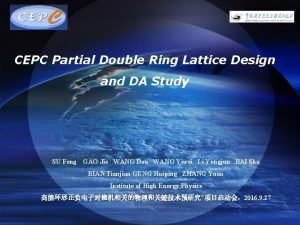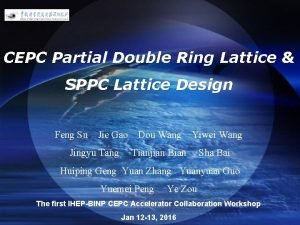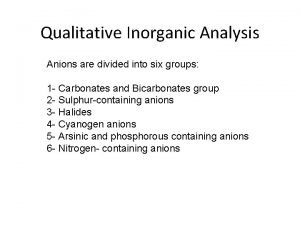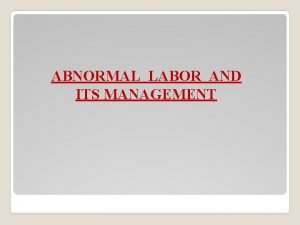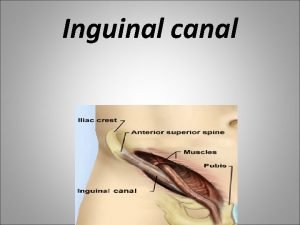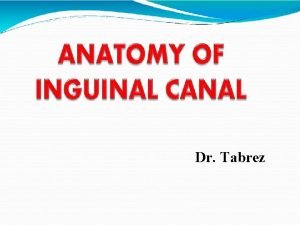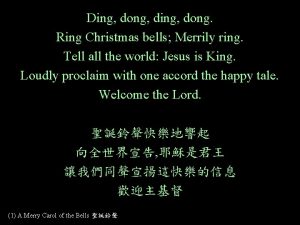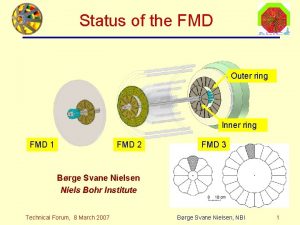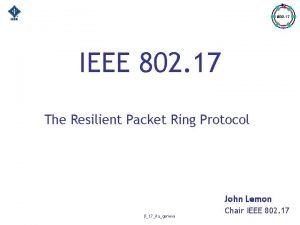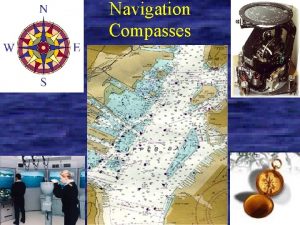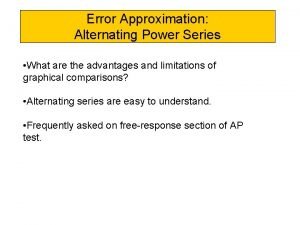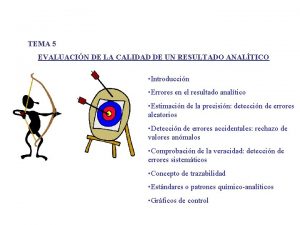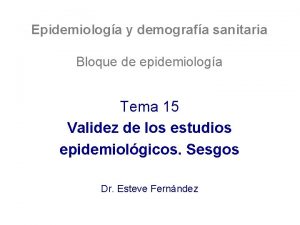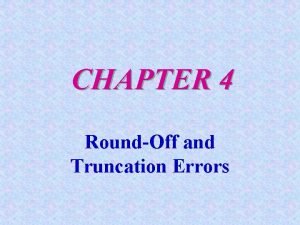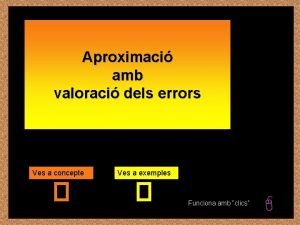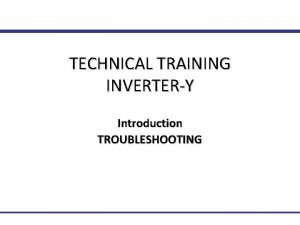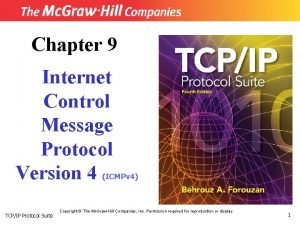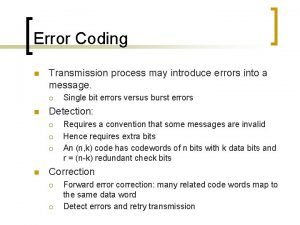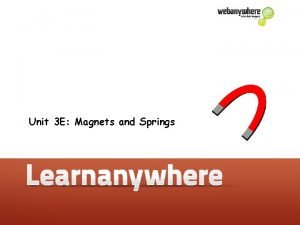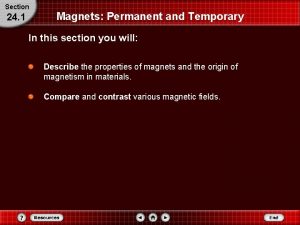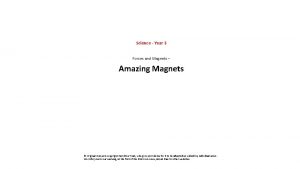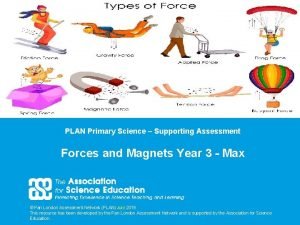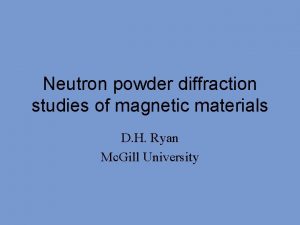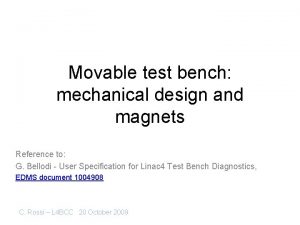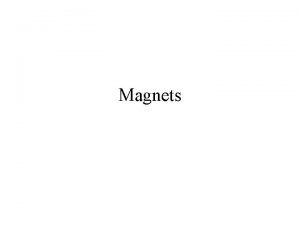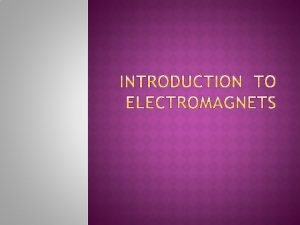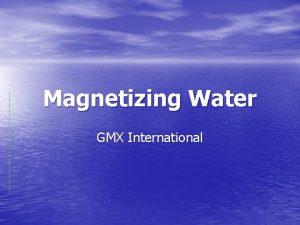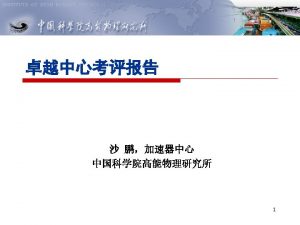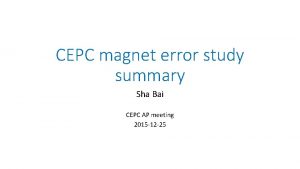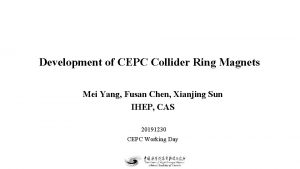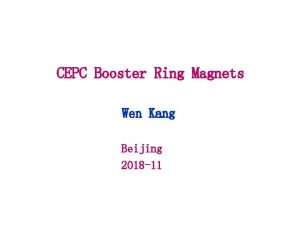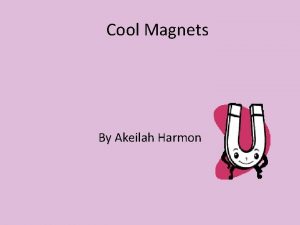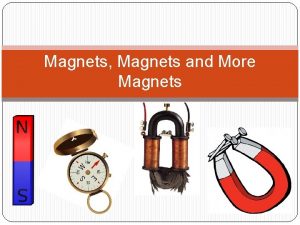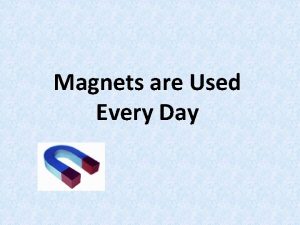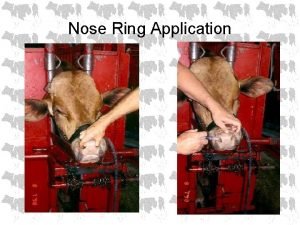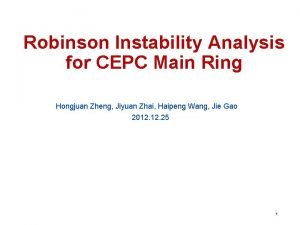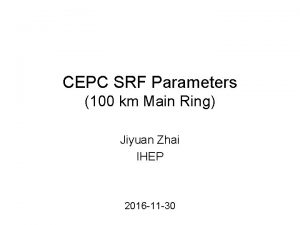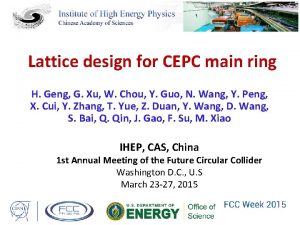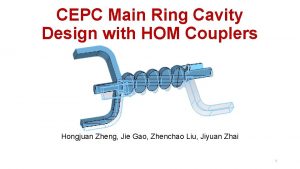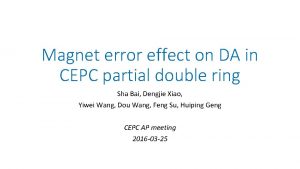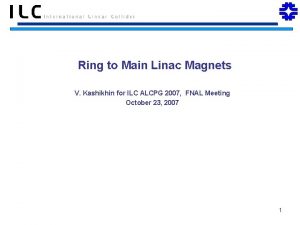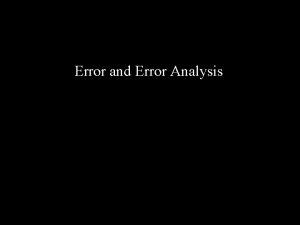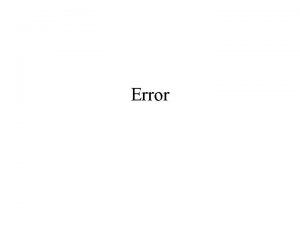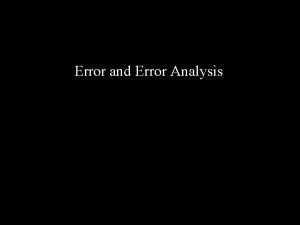CEPC main ring magnets error effect on DA


































- Slides: 34

CEPC main ring magnets’ error effect on DA and MDI issues Sha Bai, Dengjie Xiao, Yiwei Wang, Feng Su, Dou Wang, Tianjian Bian, Yuan Zhang, Huiping Geng, Yingshun Zhu, Qinglei Xiu, Kai Zhu, Hongbo Zhu 09 -27 -2016 CEPC项目启动会

Outline • CEPC main ring magnets’ error effect on DA • CDR report goal • Plan in future • MDI issues

BEPCII CEPC bend quad sext Dx(mm) 0. 2 0. 15 0. 3 0. 15 Dy(mm) 0. 2 0. 15 Tilt(mrad) 0. 1 0. 2 0. 5 0. 1 0. 5 B*L 3 e-4 2 e-3 5 e-4 4 e-3 quadrupole (s) 3 e-4 sextupole(s ) 6 e-4 Octupole(s) Decapole(s ) 5 e-4 Dodecapol e(s) 8 e-4 5 e-5 2 e-4 6 e-4 7 e-5 5 e-4 1. 7 e-3 9 e-5 2 e-4 1. 3 e-4 6. 9 e-4 3. 4 e-3 6 e-4 5 e-4 1. 4 e-4 1 e-3 6. 5 e-3 Quadrupole (r) 1 e-4 3 e-4 Sextupole(r ) 1 e-4 2 e-4 3 e-3 2. 9 e-4 1. 2 e-3

Multipole errors Source • Multipole error from two parts: • Systematic: intrinsic during the manufacture • Random: Due to the differences between individuals, the field components in the lattice elements may have random errors

Multipole errors effect on DA in CEPC single ring Bend multipole errors (whole ring including FFS) Quad multipole errors (whole ring including FFS) Sextupole multipole errors(whole ring including FFS) (B, Q, S)multiple errors (whole ring including FFS) • Off-momentum DA is not changed obviously, with 2% (2~3σx, 15~20σy), onmomentum DA in vertical is reduced to one third of the original. • Tune is kept, no effect on tune • Orbit is kept to be zero, no effect on orbit • Bend is set to be bend, but quadrupole and sextupole are set to be MULT • Tracking in 240 turns, Coupling factor =0. 003 for emitty l Multipole errors can not be cured during commissioning, but could be accepted due to the not obvious change of off-momentum DA.

Multipole errors effect on DA in CEPC PDRv 1 No error Multipole errors of B, Q, S magnets Multipole errors of quadurpoles Multipole errors of sextupoles • Multipole errors reduce DA a little bit , but not much. It seems to have not much effect on DA, especially of off-momentum DA. • Orbit has no change due to multipole errors.

Multipole errors effect on DA in CEPC PDRv 4 No error Multipole erors from B, Q, S magnets Multipole errors from sextupoles • Multipole errors reduce DA a little bit , but not much. It seems to have not much effect on DA, especially of off-momentum DA. • Orbit has no change due to multipole errors.

Magnet field error on DA in CEPC single ring no error • • • l With all (B, Q, S) B*L field errors, whole ring including FFS. Tune has changed a lot: μx=0. 0510854 μy= 0. 1526778 Orbit correction and tune adjust are needed Bend set to bend, and Quad and Sext set to be MULT Tracking in 240 turns, coupling factor κ=0. 003 for εy Could be cured by adjusting the current during commissioning

Magnet field error on DA in CEPC partial double ring u Main effect coming from the bending magnet no error With bend B*L error (whole ring including FFS) μx = 0 μy= 0 Orbit in X With bend B*L error Orbit in Y With bend B*L error (whole ring including FFS) • With bending magnet field errors, horizontal orbit has changed a lot, but vertical has no change • Tune has changed to be an integer resonance, beam is not stable. • Orbit correction is needed in horizontal • Tracking in 240 turns, coupling factor κ=0. 003 for εy • Could be cured by adjusting the current during commissioning

Orbit correction result Before correction After correction Lattice version: CEPC-ARC 1. 0 -PDR 1. 0 -FFS (WD 1. 0)

BPM readings and correctors strength statistic BPM readings statistic X CORRECTION SUMMARY: RMS before correction 2. 127 mm RMS after correction 0. 0009987 mm Y CORRECTION SUMMARY: RMS before correction 0. 6423 mm RMS after correction 0. 0009935 mm Correctors strength statistic X CORRECTION: about 1700 correctors used Max strength ~ 23 urad RMS ~ 0. 77 urad Y CORRECTION: about 1700 correctors used Max strength ~ 6. 7 urad RMS ~ 0. 37 urad

DA(PDR) after orbit correction Lattice version:CEPC-ARC 1. 0 -PDR 1. 0 -FFS (WD 1. 0) DA after orbit correction No error (best seed) DA after orbit correction (worst seed) Dynamic aperture can almost be recovered after orbit correction for most seeds.

DA after orbit correction statistics DA(on-momentum) after orbit correction 70 60 50 DA _xy (�) 40 DA_y 30 DA_x 20 10 0 1 2 3 4 5 6 7 8 9 10 seeds 11 12 13 14 15 16 For both on-momentum and off-momentum DA, most seeds can be recovered. 17 18 19 20

CDR report goal of error study • lattice without error fixed and DA reach goal. • DA of lattice with multipole errors (impossible to correct & adjust level to requirement) reach goal. 20 x/40 y for on-momentum, 5 x/10 y for off-momentum

Error study plan in future u Orbit correction (misalignment error) • Orbit correction with correctors & BPM • Code could be used: SAD, MADX, AT • Correction procedure: • From Large error to small error step by step: quadrupole, sextupole. . of 1 e-4, 9 e-5, 8 e-5, 7 e-5……, each should be calculated in 100~200 seeds. • Final focus magnets especially final doublet, quadrupoles and sextupoles in CCS may calculate separately and may need detail analysis. u Optics correction(Dy etc on), coupling correction Decide the final magnet misalignment requirement

Machine Detector Interface • Tasks of MDI • • IR lattice and layout design Final Focusing magnets Solenoid compensation Luminosity Measurement Beam Induced Background Estimation Detector shielding and radiation protection Mechanics and integration • Regular group meetings • Indico: http: //indico. ihep. ac. cn/category/323/ • Twiki: cepc. ihep. ac. cn/~cepc/cepc_twiki/index. php/Machine_Detector_Interface • Will compare the difference between single ring and partial double ring.

IR Layout -- Single Ring • L* = 1. 5 m • To meet requirements from both accelerator and detector • Suppress the beam backgrounds as more as possible

IR Layout -- Partial Double Ring •

Final Focusing Magnetic -- Single Ring 2 D flux lines Magnetic flux density distribution Magnet Length Field Gradient(T/m) Coil Inner Radius (mm) Coil Outer Radius (mm) QD 1. 25 304 ~200 20 37 QF 0. 72 309 ~110 20 37 l Coils in Rutherford type Nb 3 Sn cables clamped by stainless steel collar l The field gradient will be decreased to match the feasibility in technology

Final Focusing Magnetic – Partial Double Ring Magnet Length Field Gradient(T/m) Coil Inner Radius (mm) Coil Outer Radius (mm) QD 1. 25 ~200 12. 5 18. 5 QF 0. 72 ~110 20 37 • 2 isolated QD are required to make sure e+ e- pass through the center of the quadrupoles separately. • The thickness of the coil is tightly limited by the radius of beam pipe and the distance between two beam pipes. • Cross talk of field between two quadrupoles need be further studied.

Solenoids layout-sketch p To minimize the effect of the longitudinal detector solenoid field on the accelerator beam, solenoid coils are introduced. p The total integral longitudinal field generated by the detector solenoid and solenoid coils should be zero. p Screening solenoid (at the same location of QD 0): The longitudinal field inside the quadrupole bore should be 0. p Center field of screening solenoid : 3. 3 T, magnetic length: the same as QD 0. Compensation conditions: B_main*L_main+B_comp*L_comp=0 L* = L_main +L_comp = 1. 5 m Compensating solenoid is located between IP and QD 0 - crossing angle α = 30 mrad Radius of: Length: - compensating solenoid R = 0. 1 m L=0. 4 m - screening solenoid R = 0. 1 m L=1. 3 m p Compensating solenoid options (before QD 0): 1) length 1 m, Center field: 5. 2 T (Nb. Ti technology ) 2) length 0. 7 m, Center field: 7. 4 T (Nb. Ti technology ) 3) length 0. 4 m, Center field: 13 T (Nb 3 Sn technology )

Influences on the Detector Compensating solenoid FTD Lumi. Cal • In the worst case: • • The FTD detector need be more compact Dead area to TPC (Reduce Length of TPC ? ) Very tight space for Lumi. Cal More backscattered backgrounds to VTX and FTD

Compensating and screening solenoids Item Compensating Solenoid Screening-Solenoid(QD 0) Central field (T) 13 3. 3 Length (m) 0. 4 1. 3 Conductor Type Nb 3 Sn, 4× 2 mm Nb. Ti-Cu, 4× 2 mm Coil turns 2300 2600 Coil layers 23 8 Excitation current(k. A) 2. 1 1. 5 Stored energy (KJ) 1150 215 Inductance(H) 0. 53 0. 21 Peak field in Coil (T) 13. 4 3. 5 Coil inner diameter (mm) 200 Coil out diameter (mm) 292 232

Luminosity Calorimeter •

Source of Beam Backgrounds at CEPC • Synchrotron Radiation • Bending Magnetic • Quadrupoles • Lost Particles • Radiative Bhabha • Beamstrahlung • Beam-Gas Scattering Generator Accelerator Simulation Geant 4(Mokka) • Beamstrahlung • Pair production • Hadronic background Analysis

Framework for Background Simulation • Have established a framework for background simulation on the IHEP computing platform. • Generator: • Guinea-Pig++: Beamstrahlung • BBBrem: Radiative Bhabha • Self developed codes: Beam-gas scattering and other backgrounds • Accelerator Simulation: • SAD (Strategic Accelerator Design): Beam particle tracking • BDSIM: Also used as generator for synchrotron radiation • Detector Simulation: • Geant 4 (Mokka) • Fluka • Interfaces between all the software have been implemented. • Developed a toolkit to use these software conveniently

Physical Requirement to Background Level • Parameters Single Ring PDR-H Low Power PDR-H High Power PDR Z Pole Number of Bunches 50 57 144 1100 3. 6 0. 187 0. 074 0. 0097 < 200 < 20 < 10 <1

Hit Density Without Shielding Single Ring • Synchrotron radiation is the most important issue because of the huge photon flux • The beamstrahlung in the partial double ring might be more serious than that in single ring due to the modification of beam pipe. • Shielding and protection are essential to reach the physical requirements

Methods to Suppress Background Level • Synchrotron Radiation • Shielding the synchrotron photons with collimators • Let the synchrotron photons pass through the IR by well designed beam orbit. • Lost Beam Particles • Add collimators along the storage ring.

Preliminary Design of Collimators • Vertical Feasible Region l Upper Limit: l TMCI: l Injection:

Effects of Collimators to Lost Particles Radiative Bhabha Beamstrahlung • The hit density due to lost particles at VTX are significantly suppressed by collimators • Shielding of other backgrounds are under studying

MDI summary • Single Ring • Lots of progresses have been made in: IR design, final focusing magnets, luminosity calorimeter, background estimation and detector shielding • The beam pipe design, mechanics and integration have not been covered yet. • Partial Double Ring • The space for beam pipe and QD 0 at L* is tighter than single ring. • The pressure of suppressing background level in detector is higher than single ring. • The beam pipe design, mechanics and integration have not been covered yet.

Thank you

 Cepc logo
Cepc logo Cepc logo
Cepc logo What is the brown ring in the brown ring test
What is the brown ring in the brown ring test Ring uterus
Ring uterus Hesselbach's triangle
Hesselbach's triangle Inguinal ligament
Inguinal ligament Ding dong ding dong christmas bells are ringing
Ding dong ding dong christmas bells are ringing Wise men gifts
Wise men gifts Inner ring and outer ring
Inner ring and outer ring Resilient packet ring
Resilient packet ring Pregnancy test keeps saying error
Pregnancy test keeps saying error Type 1 error vs type 2 error example
Type 1 error vs type 2 error example Compass rose
Compass rose Null and research hypotheses
Null and research hypotheses Absolute error and relative error
Absolute error and relative error Power swries
Power swries Error sistematico y error aleatorio
Error sistematico y error aleatorio Error aleatorio
Error aleatorio Sesgo berkson
Sesgo berkson Round off error vs truncation error
Round off error vs truncation error Error absolut i error relatiu
Error absolut i error relatiu O'general ac error code list
O'general ac error code list During error reporting, icmp always reports error messages
During error reporting, icmp always reports error messages Crc example
Crc example Percent uncertainty
Percent uncertainty Magnets for year 3
Magnets for year 3 Magnets and springs
Magnets and springs What happens if you break a magnet in half
What happens if you break a magnet in half Amazing magnets fishing magnet
Amazing magnets fishing magnet Why do magnets repel
Why do magnets repel Magnets for neutron diffraction
Magnets for neutron diffraction Amazing magnets
Amazing magnets Why do magnets repel
Why do magnets repel Are electromagnets permanent or temporary
Are electromagnets permanent or temporary Gmx problem
Gmx problem
